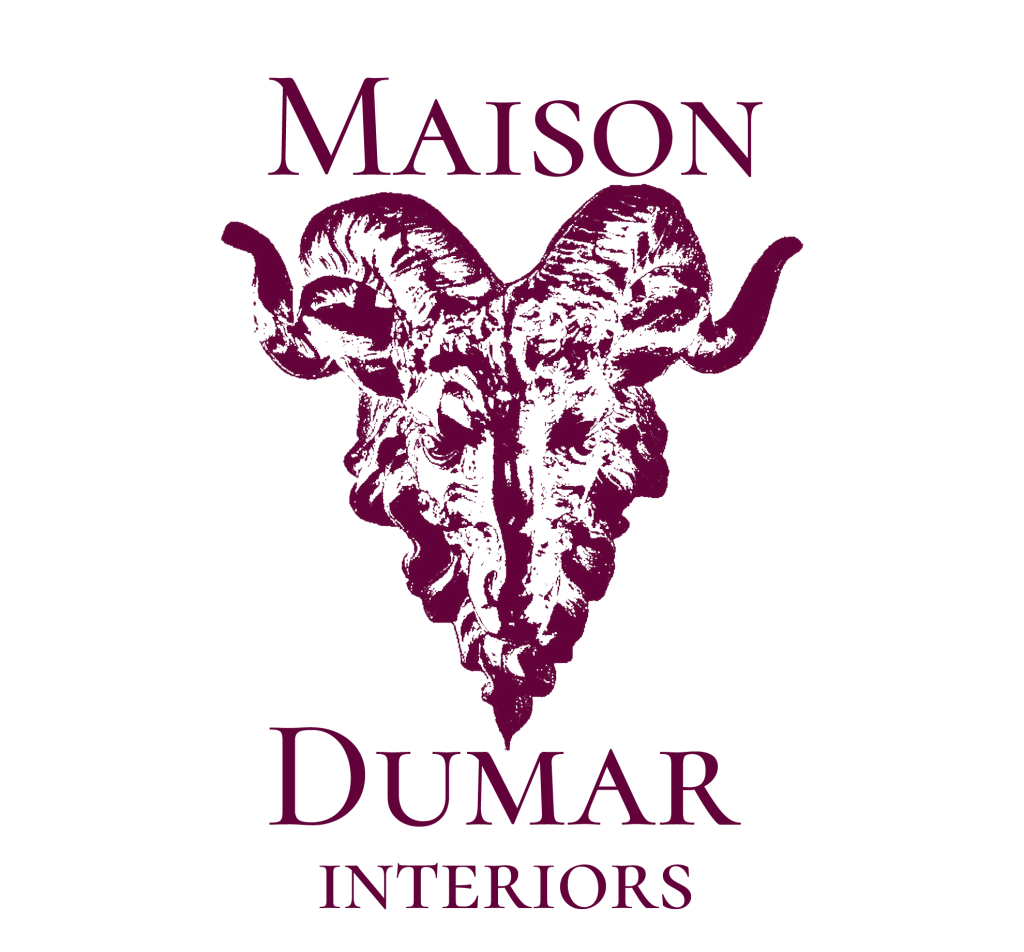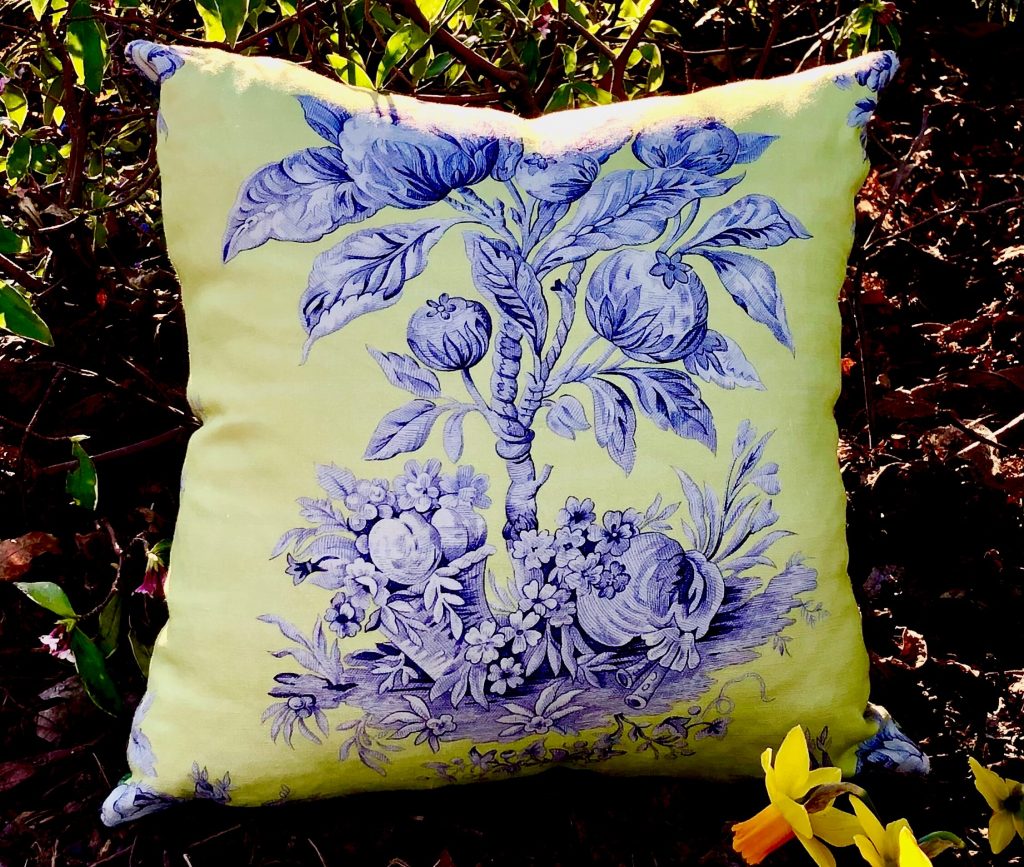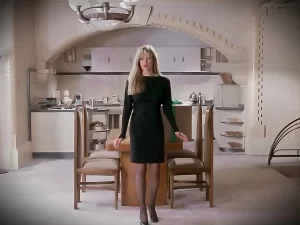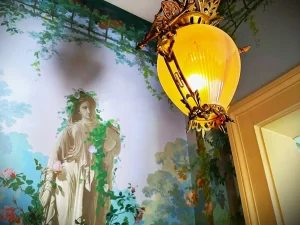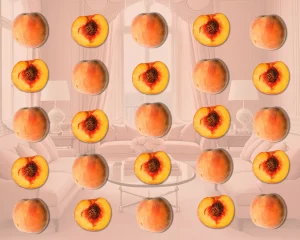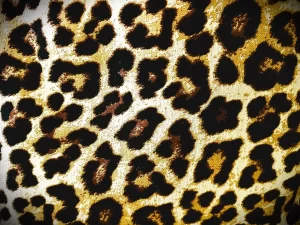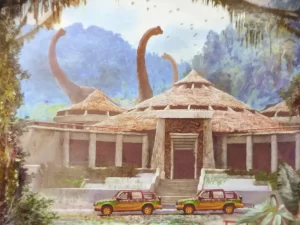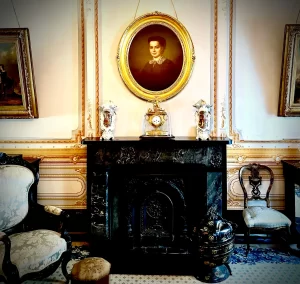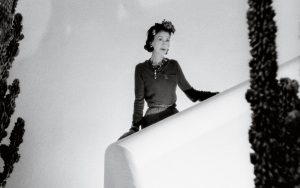Versailles, only a short distance from the center of Paris, makes a wonderful day trip where one can spend hours exploring the palace and grounds. The site is among the most visited attractions in France and has become an icon of French heritage—a monument to the splendor of the Louis kings of the Ancien Régime.
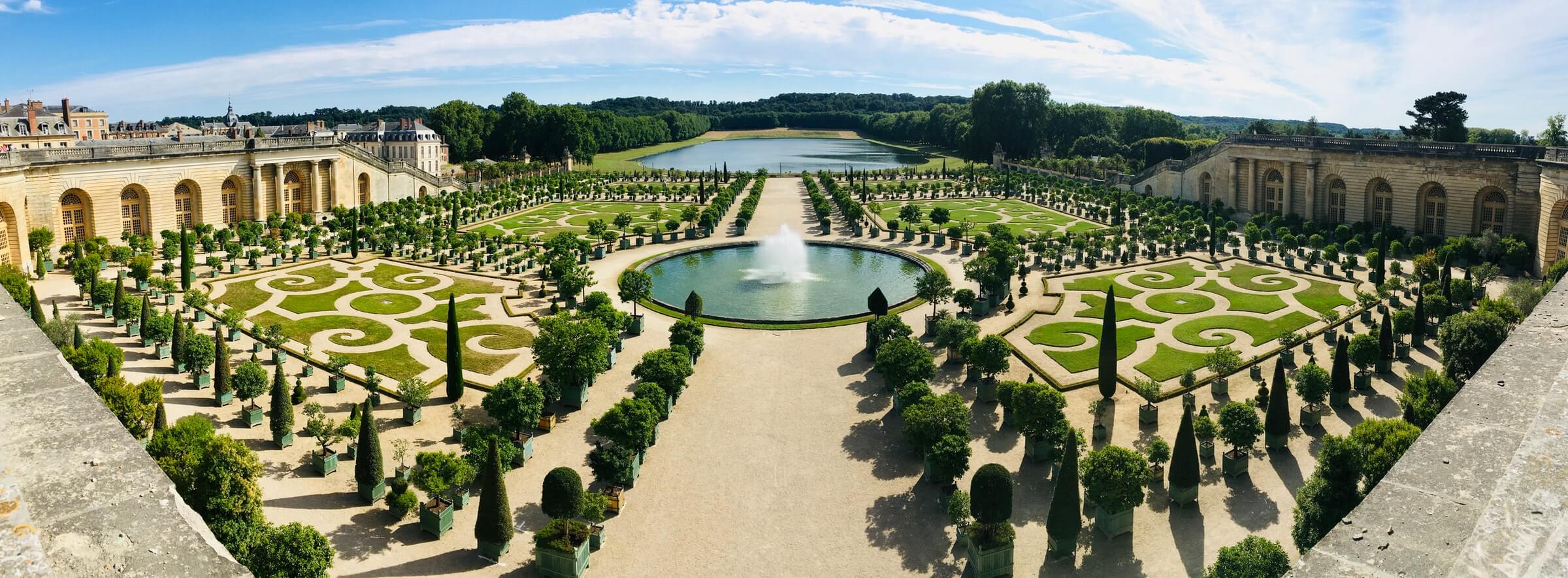
However, it was not always the seat of French monarchical power.
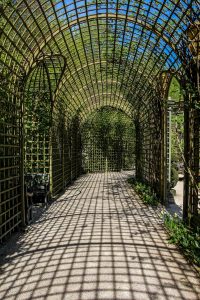
In fact, it began as a comparatively modest hunting lodge for Louis XIII to take advantage of the abundance of game in the area. It was only after his successor, Louis IV, acceded to the throne that Versailles began to take on increasing importance, eventually becoming the center of power for the country of France and, to some extent, the continent beyond.
In much the same way that a small hunting lodge was transformed into a palatial powerhouse, so too was the wilderness surrounding it transformed into gardens of magnificent delight into which the king and his court could stroll for pleasure and pondering.
Such a process was no small feat. Designed by André Le Nôtre and representing the height of French formal gardening, the earthworks and plantings required to transform the wild woods into a structured landscape park— with its parterres, bosquets, and fountains—were extremely labor intensive. In other words, EXPENSIVE! What better way to flaunt wealth and power?
These vast and beautiful gardens thus inspired a pair of cushions from my “Printemps à Versailles” collection referenced in my last post. The first, which I will describe here, is the “Jardin du Roi” cushion.

On the front, the fabric panel is 100% linen, exhibiting all of the textural qualities associated with that fiber. It’s cool crispness hints at durable luxury, inviting you to feel, to experience. In contrast, the vibrant yellow hue is almost confectionary—all of the tangy sweetness of a lemon tart on a cool spring day.
Upon this citron background, a graphic toile of sapphire depicting a twisting pomegranate tree ripe with fruit. What better way to evoke the Jules Hardouin-Mansart-built Orangerie, with its hundreds of warmth-loving, tender trees displayed in their fruiting glory during balmier seasons?
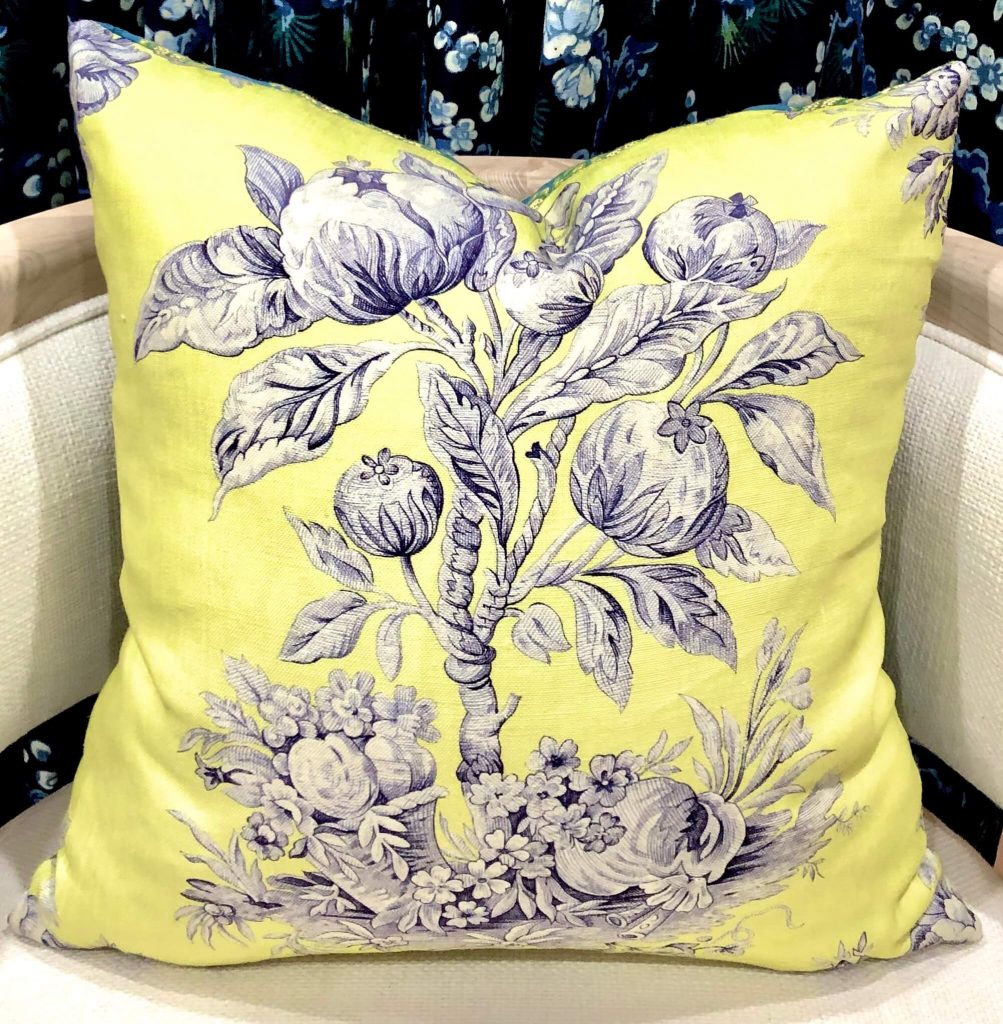
On the reverse, further allusions to French gardens and architecture. Here, a jacquard weave with a ground of royal “azure” blue features a subtle, tonal rose and dot decoration. Not quite the fleur-de-lis motif so famously associated with French royalty, perhaps, but certainly a nod in that direction. Overlaying this all, a lattice pattern of vines and foliage. In fact, it was Le Nôtre and Hardouin-Mansart who popularized trellis work, French treillage, as architectural decoration when they incorporated it into the bosquets of the Versailles gardens.
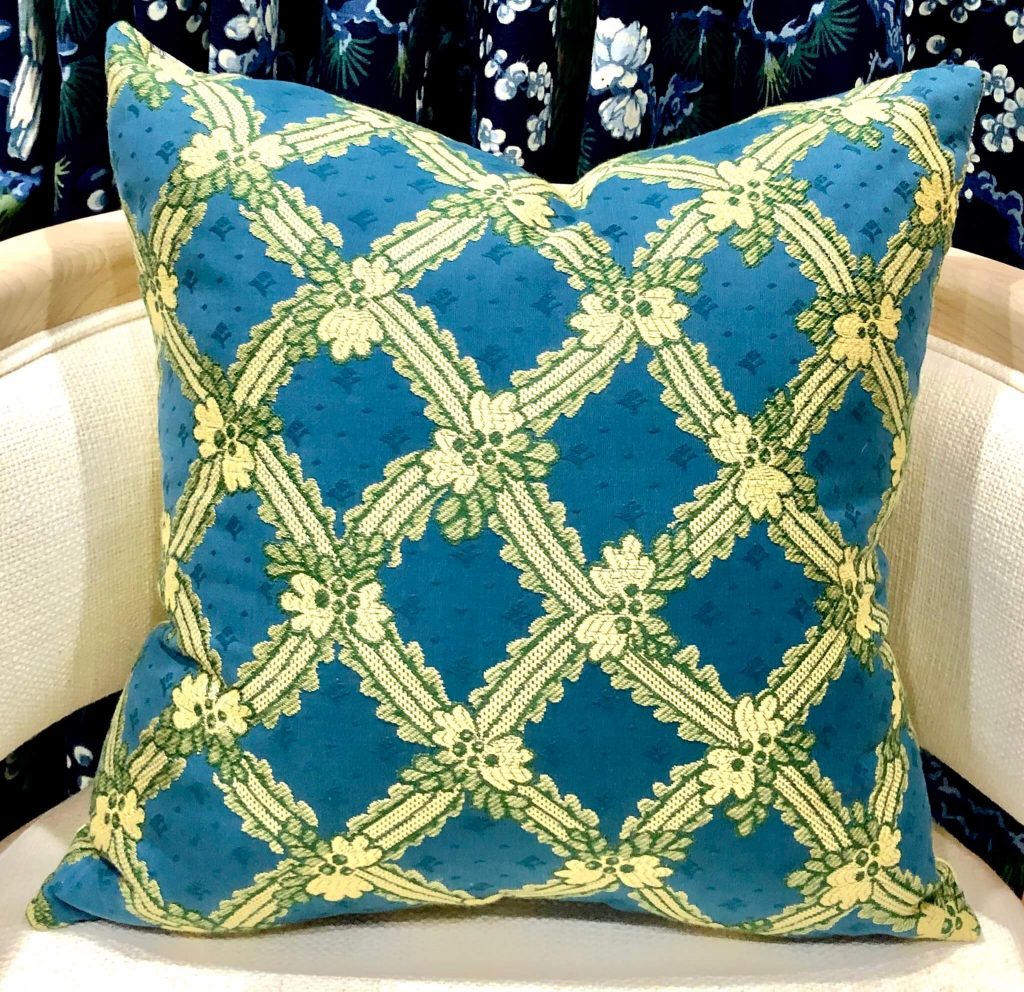
These elements, combined into the “Jardin du Roi” cushion, invoke the imagery, story, and charm of Versailles in the springtime. The fresh and bright aesthetic will bring a joie de vivre into your home’s décor, whether you live in a French palace or a humble lodge off the beaten path.
Really, a pillow fit for a king (or queen).
